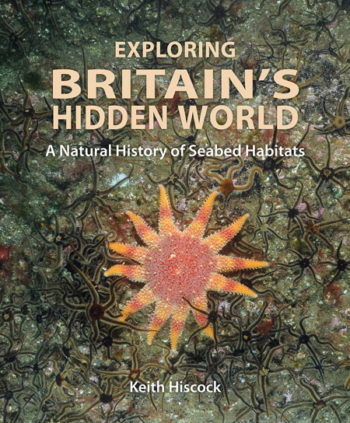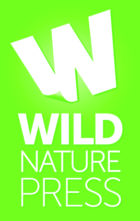Now Available
Exploring Britain’s Hidden World – A natural history of seabed habitats
Keith Hiscock
Britain’s shallow seas are a mysterious domain. They remain largely unseen and unexplored except by marine scientists and divers, who have been documenting their wondrous discoveries over many years. Now, a wealth of information about what lives on and in the seabed has been brought together in one sumptuously illustrated volume.
Keith Hiscock describes the incredible variety of marine life that exists around Great Britain, providing a foundation of knowledge for those interested in the natural history of the shallow seabed. He explains how findings are gathered and organised, as well as showing what is out there and how it works. Fascinating, beautiful and often fragile, the habitats and marine life described are essential to the health and productivity of our oceans. Without an adequate, shared understanding of what and where they are, how can we identify and protect them?
Exploring Britain’s Hidden World is the culmination of 50 years of research by the author to better understand where different subtidal seabed habitats occur and how their associated marine life has come to exist. That quest draws on a rich vein of knowledge obtained by many naturalists, scientists and divers who, for almost 200 years, have described seabed communities and sought to understand their structure and function.
Using a minimum of technical terminology, Keith Hiscock combines his interests in marine biology, diving and photography to inform, inspire, and leave a vivid and lasting impression of the marine habitats and species around Britain. He hopes this book will provide new insights, much pleasure, and perhaps some surprises too.

Details:
Author: Keith Hiscock
Foreword: Professor Callum Roberts
Published by: Wild Nature Press
ISBN 9780995567344
Hardback
Extent: 272pp
Size: H 254mm x W 210mm
Currently on offer at https://wildnaturepress.com/our-titles/exploring-britains-hidden-world/
RRP £25, on offer at £22.50 +P&P
Exploring Britain’s Hidden World – A Natural History of Seabed Habitats
Keith Hiscock
Wild Nature Press
A review by Bob Earll, CMS
In his Foreword to Keith’s book Callum Robert’s said, ‘You can wait a life time for a book like this’. Well I’ve known Keith for that lifetime, 50 years diving and working on the marine life and environment of the UK and it’s the book he was always meant to write. It is a triumph.
Tansley the eminent plant ecologist whose work transformed our approach to plant ecology in the 1920’s wrote, ‘Every kind of scientific investigation has two stages – the descriptive and the analytical. We must first know clearly what the phenomena are – the things or process we propose to investigate; and thus we must carefully observe and accurately record before we can proceed to find out how particular phenomena come about.’ When Keith started his diving studies in the late 1960’s that description didn’t exist. It does now! Much of his work has been devoted to marine conservation and in the 1970s when marine conservation in the UK started, terrestrial conservationists took this descriptive base for granted. The book acknowledges the wide range of work by countless people whose efforts have been devoted the conservation of the UK’s shallow seas and building this descriptive base.
For marine biologists and benthic ecologists who have never been underwater and come face to face with sheer diversity of what confronts them it clearly is difficult to comprehend what is seen. The book illustrates this fascinating range of life, from the finest red seaweeds or smallest amphipods to the large animals like fish and seals whose behaviours unfold before your eyes. It also describes the sheer diversity of habitats in the shallow seas around the UK and their close proximity with sediment and rocky communities side by side. This book does many things really well and just a few of these would include:
- There is a clear sense of the developments over time and acknowledgement of the range of people and the new technologies that have enabled us to visualise, then describe the seabed habitats more effectively
- It shows not only the species and their habitats but also explains the context of their distributions
- It also illustrate many of the sites that will be familiar to divers and those working around the coast of the UK.
- Its lavish production with images on every page illustrates our understanding of the underwater environment and the publishers and sponsors should be congratulated for their support.
This book should be essential reading for anyone who is working on marine biology, environmental management or conservation in the marine environment of the UK. It also pulls off the remarkable achievement of being both attractive and comprehensible to non-specialists.
